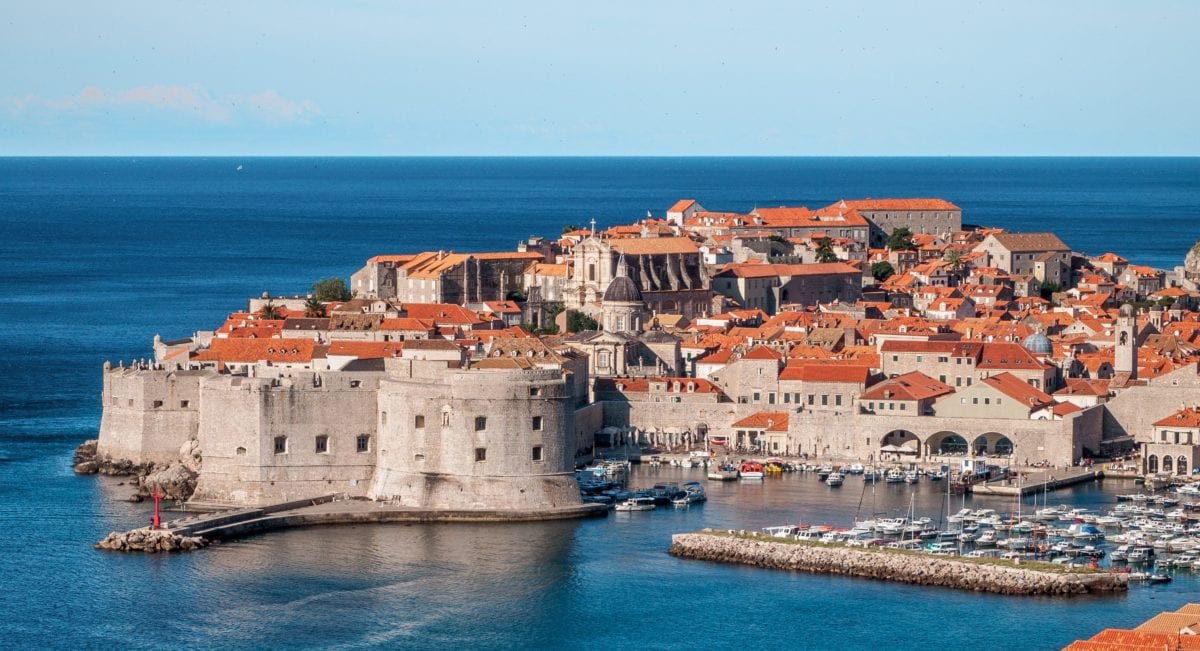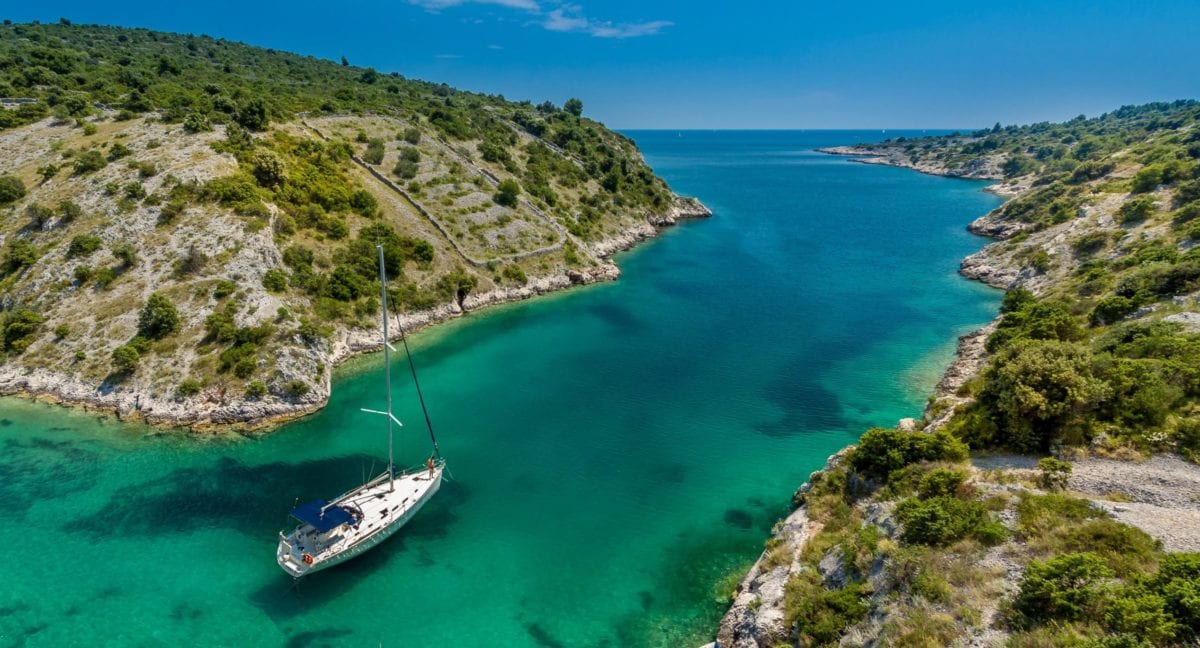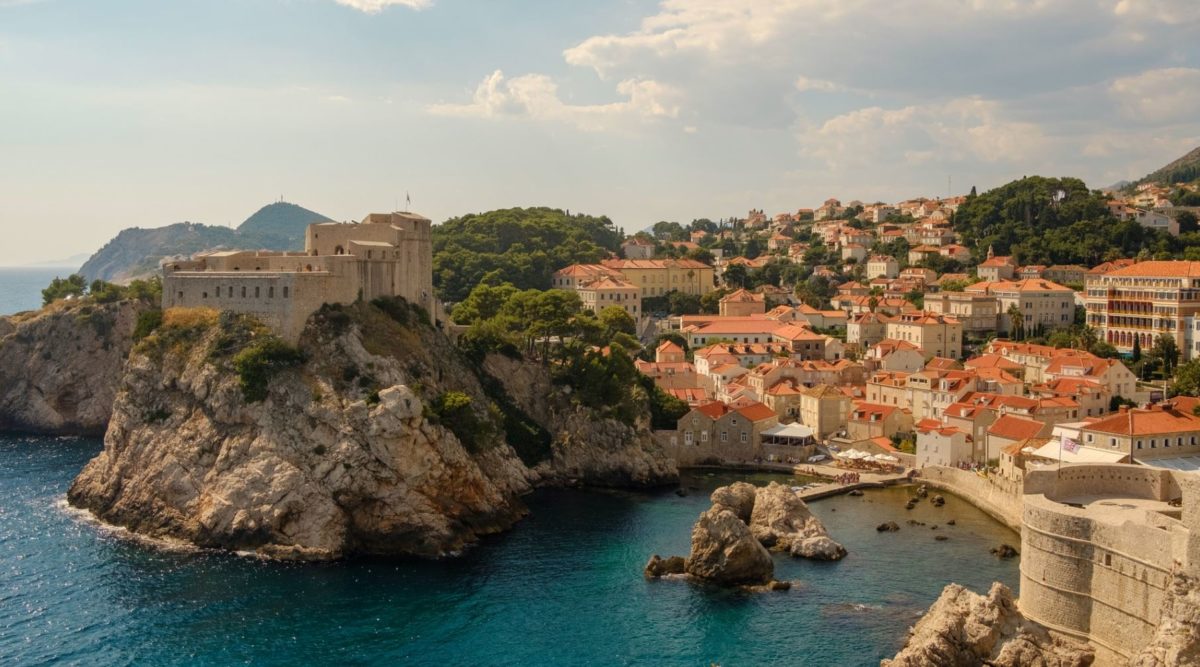If you're looking into a trip to Europe in 2024, I think Croatia should be at the top of your list.
My recent 10-day trip around this scenic country along the Adriatic Sea opened my eyes to what quickly became one of my favorite countries in the world. Like nearby Italy and Greece, I knew Croatia would be beautiful, full of amazing food and wine, and provide an idyllic travel experience.
What I didn't expect about the lovely nation is why I'm writing about it now: Croatia is affordable, amazingly easy to navigate, and is one of the most convenient travel experiences abroad I've ever experienced.
I've boiled it down to four reasons why Croatia should move up your travel wish list.
Croatia is Incredibly Scenic and So Much Fun
This is the easy part, and the part you probably already know: Croatia is stunning and a super fun place to travel.
My time in Dubrovnik, Hvar, Split, Pula, Plitvice Lakes, and Zagreb, Croatia took me to some unbelievably scenic vistas that looked straight out of a movie or TV show.
The Old Town of Dubrovnik was one of them. The centuries-old city made newly popular by HBO's Game of Thrones series is so much more than an epic filming location, though. It's a one-of-a-kind ancient city with modern restaurants, bars, and attractions.

You can walk the top of the walls (tickets from $35) all the way around the city for sweeping views of the city carved out of the side of a mountain. And then you can take the cable car (or make the hike!) to the top of Mt. Srd for a dramatic sunset over the city and the surrounding islands. I put together a full guide to Dubrovnik last month that can answer all of your questions, but spoiler alert: I loved it.
Up the coast on the island of Hvar, you'll find more of a laid-back, coastal vibe and some more stunning views.

Hvar Town, just a ferry ride away from Dubrovnik, is the main port for one of the country's most famous islands. It's known as more of a party town, but up in the high hills of Hvar is a quieter atmosphere, too.

One of the best ways to see what the island has to offer, however, is by boat.
When you tour the island from the sea, its stunning rocky outcrops create some special swimming holes.

Up the Adriatic Coast into the northern part of Croatia is the olive oil and history-soaked city of Pula. It's not the first city that shows up on most Croatia travel guides, but is a quieter oasis for travelers and home to a stunning amphitheater.

It's not just the coastal cities of Croatia that have all the fun, though. Despite being a very skinny country that mostly hugs the coast, the capital city of Zagreb is a fine stop if you're flying in or out of the main city.
The crown jewel of the country, however, was Plitvice Lakes National Park. It requires a bit of a drive to get to, but it's worth every second behind the wheel to see this amazing spot.

OK, one more just because I love waterfalls…

My iPhone camera was putting in overtime on this trip, and you can see why. Even the most ham-handed and unstylish photographers like yours truly can together a memorable camera reel up and down this pristine country.
Also worth noting: Croatia was spotlessly clean and well-maintained everywhere we went.
Despite the heat and the proximity to the harsh sea, every inch of every city we visited in Croatia was pristine. I'll never forget the image of a worker hand-scrubbing the side of a trash can near the gates of Dubrovnik's Old Town – a truly admirable attention to detail.
There's an enormous sense of pride Croatians feel toward their beautiful country, and they'll do anything to keep it that way.
Croatia is Very Affordable
Croatia isn't the absolute cheapest country you'll find in Europe. Those distinctions go to places like Portugal, Spain, and most of Eastern Europe. But what Croatia does is blend the bougie, fancy aesthetic of Greece and Italy with the prices of Eastern Europe.
Croatia uses the Euro, which is pretty new to the country that only recently joined the Schengen Area. And what I found traveling throughout the country is that tours, restaurants, and especially grocery and convenience stores are very affordable.
I'll admit, I'm comparing prices in Croatia to how expensive everything is in the U.S. right now. But we spent many dinners at Michelin-starred restaurants that came out well shy of the typical bill I get at my neighborhood bar in Minneapolis.

I traveled throughout Croatia with a group of nine and was prepared for the whole experience to be insanely pricey, especially during the peak summer travel season. Instead, here are some examples of what we paid for meals, experiences, and more:
(Note: We had bottles of wine pretty freely flowing at all of these meals and that's included in the prices here.)
- Wine tasting in Dubrovnik at D'Vino: ~$20 per person
- Fresh caught, extra fancy seaside seafood dinner at the Rixos Premium Dubrovnik: ~$75 per person
- Tapas dinner in Dubrovnik: ~$28 per person
- Michelin guide restaurant Bistro Tavulin: ~$80 per person
- Michelin guide brunch restaurant Gradska Arsenal: ~$25 per person
- All-day Hvar boat rental (the most bougie thing we did): ~$182 per person
- Olive oil tasting and tour at the Museum of Olive Oil in Pula: $26 per person
- One night at the 5-star Esplanade Zagreb Hotel: ~$200 per person

That's not to mention the hilariously inexpensive Ubers and Lyfts we used to get around most of the time, which ranged from $7 to $20 per ride. More on that later.
These prices flew in the face of what I'd heard about Croatia. For years, it was known as one of the cheapest vacation spots in Europe. But as its popularity has soared in recent years, I heard those prices weren't as competitive as they once were.
Maybe it was the expectations of a pricier trip going in, but I was blown away by how inexpensive things were in Croatia, even if they're not the cheapest country in the world.
Getting Around Croatia is Easy
This was perhaps the most surprising part of our voyage up the Adriatic Coast: Croatia is easy to navigate.
For one, Uber and Lyft are abundant on the Adriatic Coast, and they're insanely cheap, too.
Ubers to and from the airport in Dubrovnik and Zagreb will run you about $25-35, but everything within Dubrovnik, Split, and Pula was right around $7-15. We never waited more than 10 minutes for a ride, and all the Ubers are also taxis, making for a safe and secure experience, too.

For this reason, we did not rent cars in Dubrovnik. We did have to get vehicles in Hvar because our Airbnb was way up in the mountains and out of town, and we also picked up a one-day rental in Pula to make the 3.5-hour drive to Plitvice Lakes National Park for a day trip.
But even the rental car experience was exceptional and that's because the roads, highways, and tollways of Croatia were extremely easy to navigate. The tolls ranged between $2 and $4, which we were more than willing to pay because of how good the roads were and how easy the signage was for a hapless American like myself to understand.
When not on the road, a big network of ferries also connects the islands. We ferried from Dubrovnik to Hvar and Hvar to Split on our trip.

Both of those journeys were on big, comfortable, smooth-sailing ships equipped with comfy seats, restrooms, and concessions. Our ferry rides were both on the operator Jadrolinija. While my previous ferry experiences are limited to a few Lake Michigan crossings and the Long Island Sound, these voyages were surprisingly easy and comfy.
Finally, I also got to sample Croatia's most efficient transport company five different times on our trip: Croatia Airlines.
Croatia Airlines' fleet of propeller planes crisscrosss the country like a subway system every day. Croatia doesn't have train options due to its rugged terrain, but Croatia Airlines moves people around the country with ease.

As a member of the Star Alliance, the same airline alliance as United, I earned a good chunk of United miles taking five different legs of flights on Croatia Airlines touching four different airports. Flying with Croatia Airlines is pretty no-frills, but it's easy and inexpensive. Our Pula (PUY) to Zagreb (ZAG) flights were ~$40 one-way.
Croatia is Easy for Americans
It's beautiful, it's cost-effective, it's easy to navigate, but it's also just easy to exist in Croatia, period.
For one, nearly everyone in Croatia speaks great English. It made navigating as a group of nine pretty easy, especially because the Croatian language is no walk in the park. Of course, learning simple phrases like please and thank you goes a long way when interacting with locals in any country, but I never felt judged or got any eye-rolls when walking into a business with my Midwestern English.
Croatia also widely accepts American credit cards, so you don't have to worry about taking out a bunch of cash (a little bit helps for tipping in some cases, though). I was even able to use some American Express cards in Croatia, which is pretty rare abroad. It was nice to rack up a few points on my adventure, mostly because I burned almost all of my points getting us there.
Plus, Croatia uses the Euro as its currency, making it easy to do the mental math of converting prices to U.S. dollars. If you're a finger counter like I am, this is really important. For all you actually smart people out there, I can feel your eyes rolling through the screen…
Finally, something that surprised me about Croatia is that it has some of the safest drinking water in the world.

On our first day, I went to buy a few jugs of drinking water at the grocery store, and the clerk told me to turn around and put them back on the shelf. “The water is good here. The best,” he told me.
He was right! Croatia has abundant water reserves, and the public water fountains and tap water are all perfectly safe to drink. People were filling water bottles at public fountains all over the country. I even noticed beach-goers using a beach shower spigot to fill their bottles in Split one afternoon. Bring a refillable water bottle to Croatia and don't pay for a plastic one.
Bottom Line
Croatia is beautiful, inexpensive, easy to get around, convenient for Americans, and so much more. That's why I think it deserves a spot on your travel list this year or next.

I 100% agree! I just spent two weeks road tripping down the coast from Rovinj to Dubrovnik. It was so easy to navigate to each city. Croatia is beautiful and I highly recommend visiting not only the popular and well known places. Baska on Krk island has a beach that lives in my dreams forever. Rovinj’s sunsets are unlike any I have experienced. Rijeka has a cool city atmosphere as well as a beautiful port area. I can’t wait to go back again some day!
Just returned from Croatia yesterday. I agree with everything you say. Beautiful country, nice people, good food and seemed very safe.